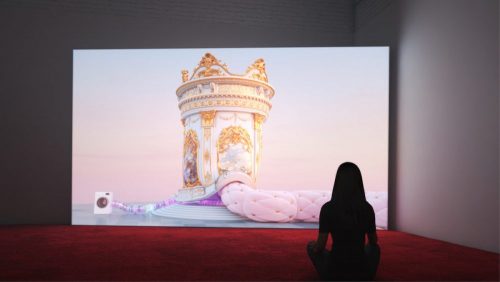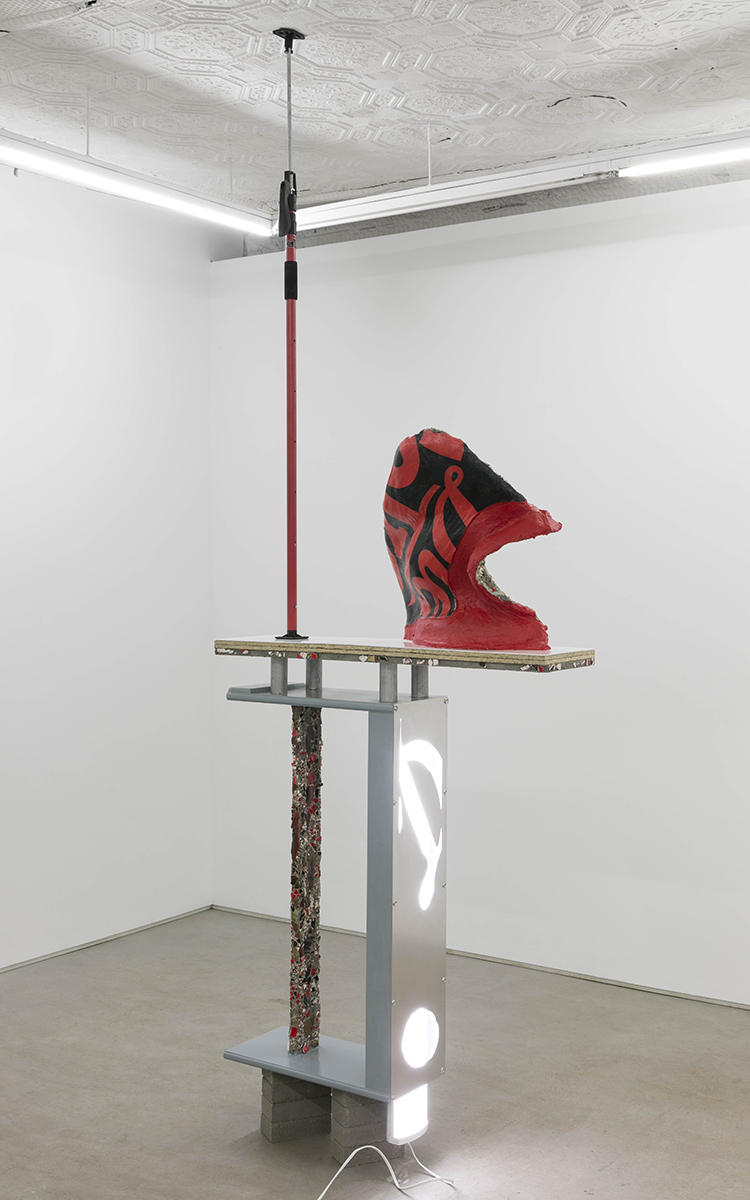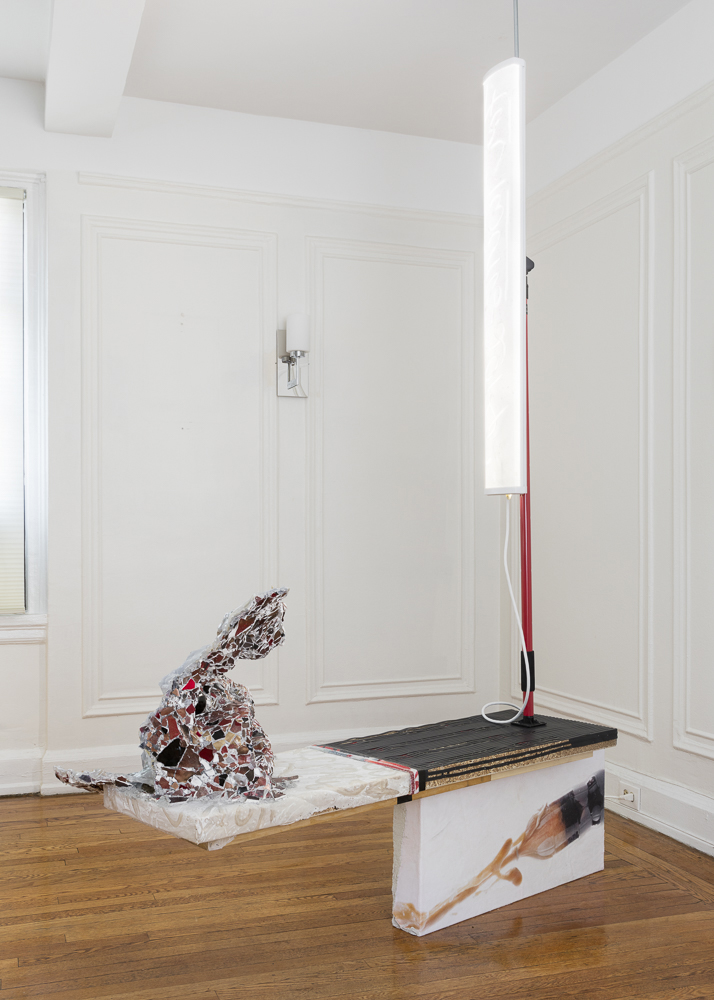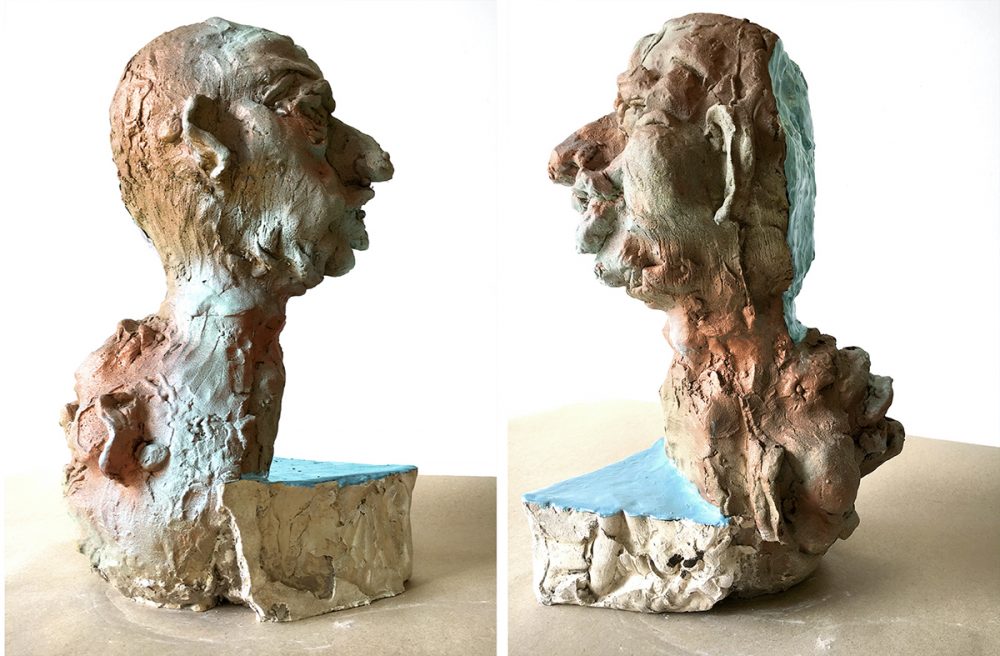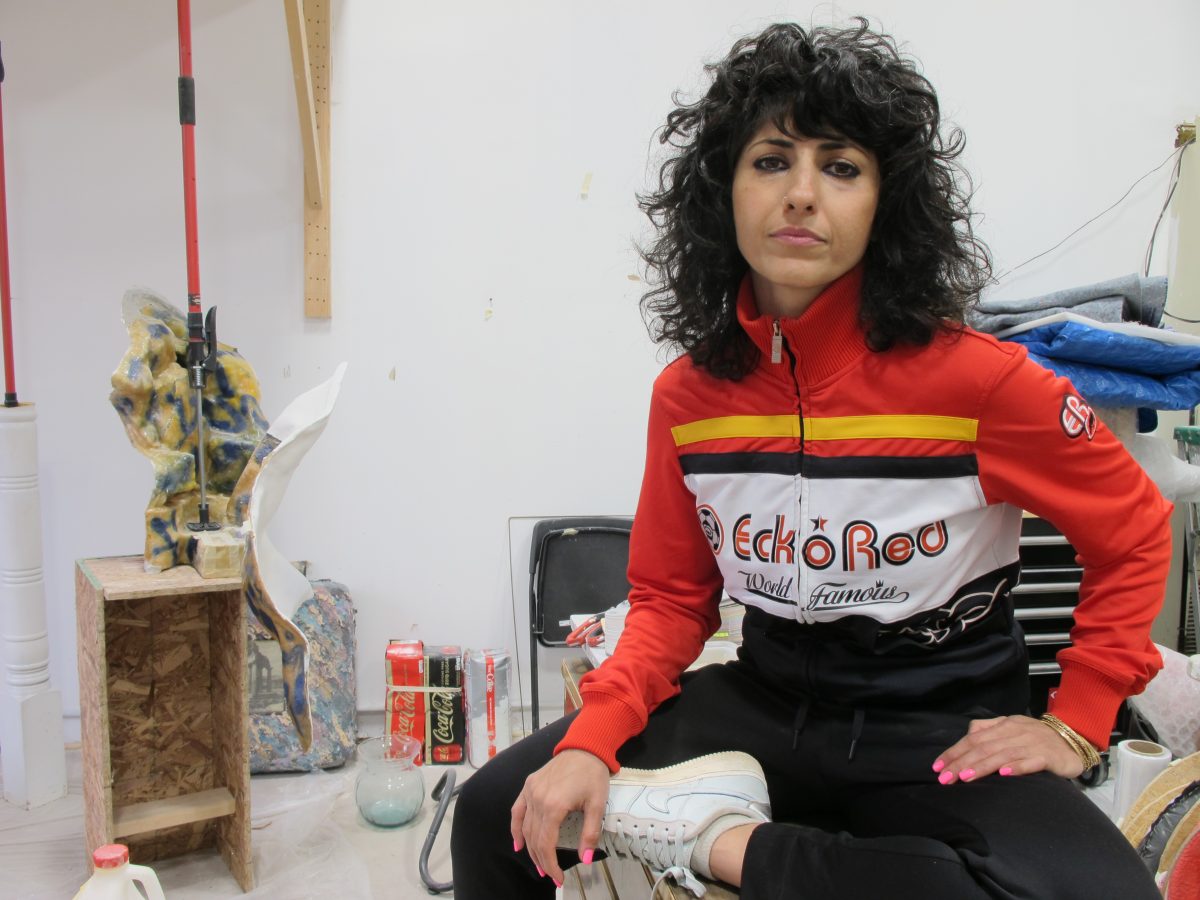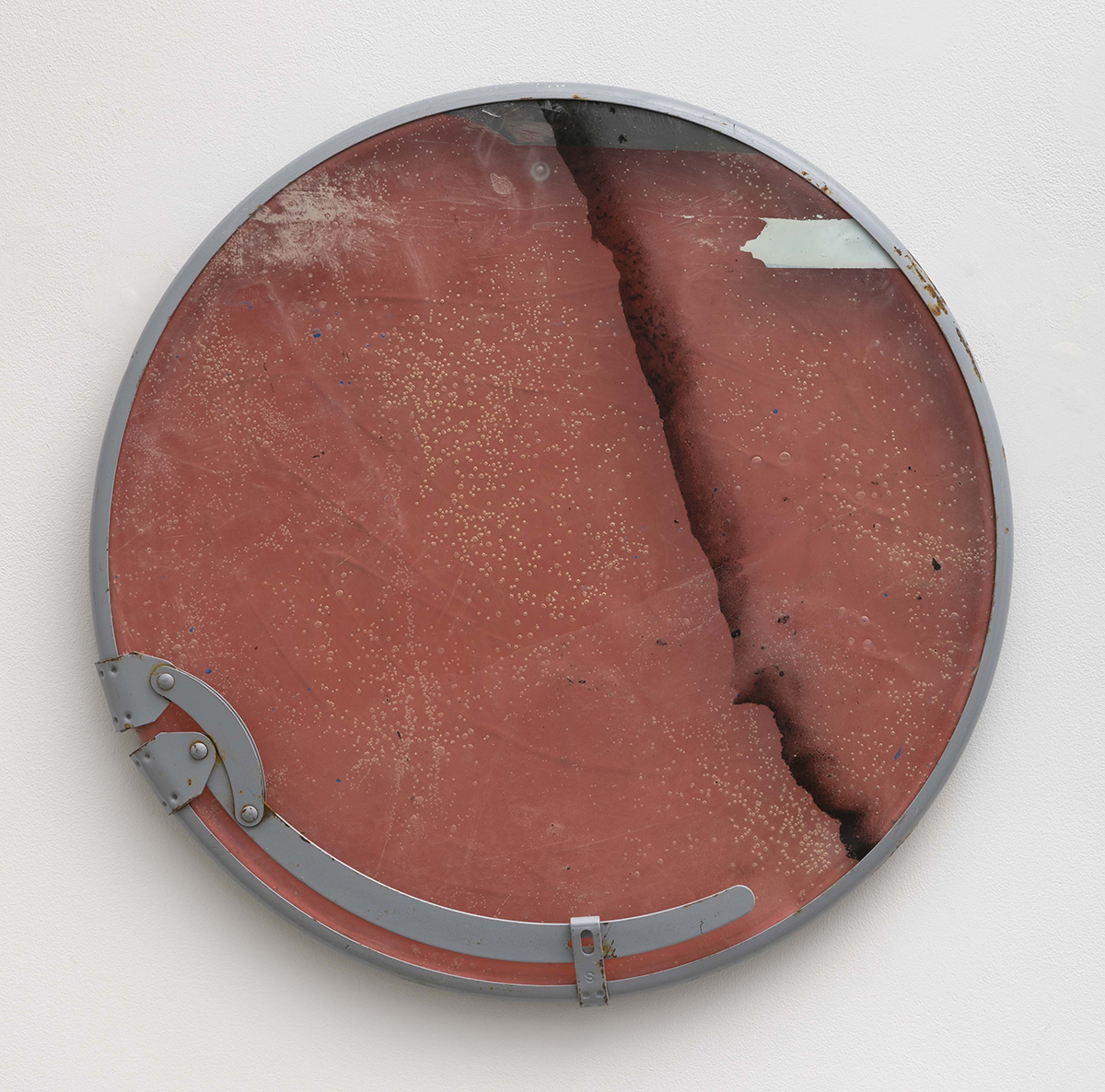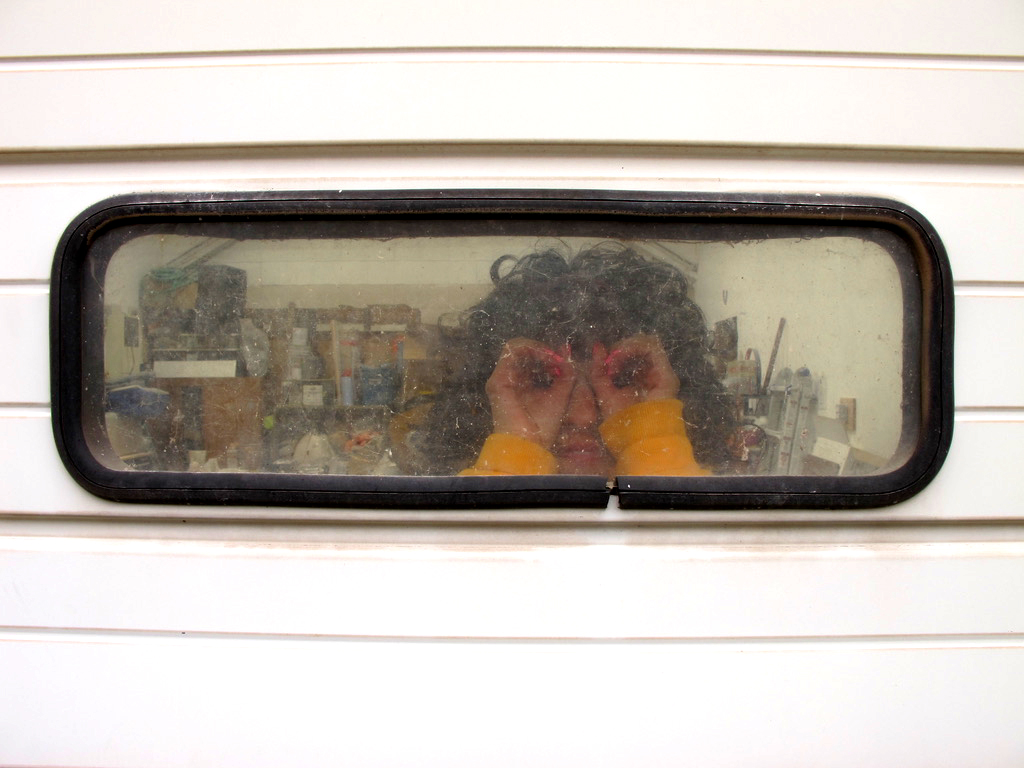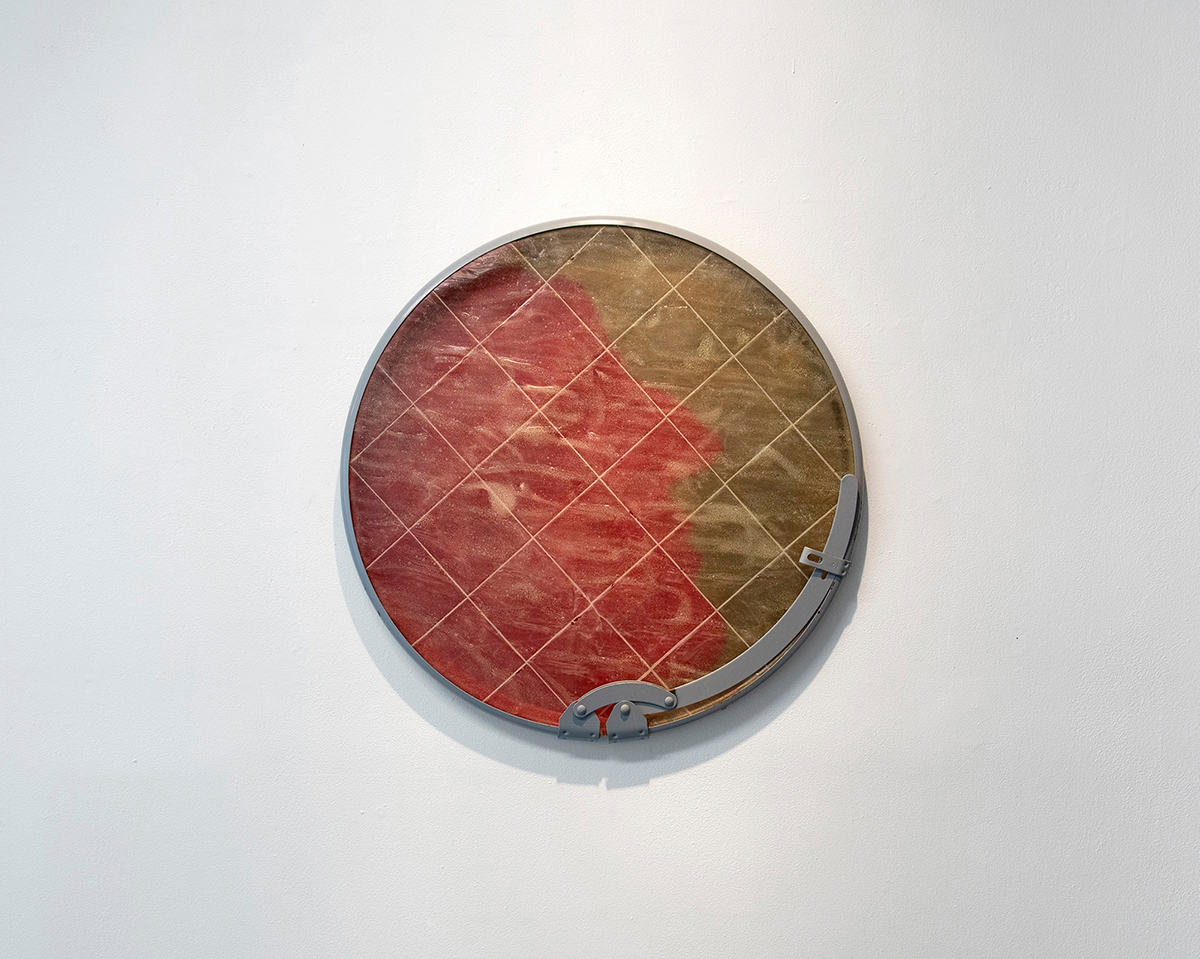Pooneh Maghazehe used to make art in secret. Back when she was an undergraduate wrapping up her degree in behavioral science at Penn State, it seemed easier to make work and hide it under her bed than to deal with a career change before she really had a career. The self-professed “science nerd” wasn’t sure what to do until she did a study abroad through Temple University where she was able to take art courses for college credit. When she came back from Italy, she knew she couldn’t go to medical school as planned, so she made a U-turn into the design world, opting for the relative security of a master’s in Interior Architecture from Pratt. Her training there helped her start a career in interior design, which remains a passion for her today alongside her studio art practice and a new full-time job as a mom to 7-month-old Ramona, or Remy for short.
But one master’s degree didn’t prove enough for Maghazehe, and after a couple of years she found herself enrolling at Columbia University to earn an MFA with a concentration in sculpture, arguably one of the most competitive MFA programs in the country. She explains the decision to go for her MFA: “I think part of that was my willingness to fail and really having an interest in free-falling and someone being there to give me some critical feedback on my work. That was a bucket list thing for me, for people to just talk to me about my work, just to have the space for that.”
Maghazehe still works steadily on projects as an interior designer, still loves all things science, and has been consistently building her career as an artist and educator between Baltimore, Pennsylvania, and New York for the past five years. The frenzy of pursuing so much simultaneously doesn’t seem to rattle her, and Maghazehe clearly approaches her winding path with humor, laughing that she has lived “maybe three lives” at 42.

